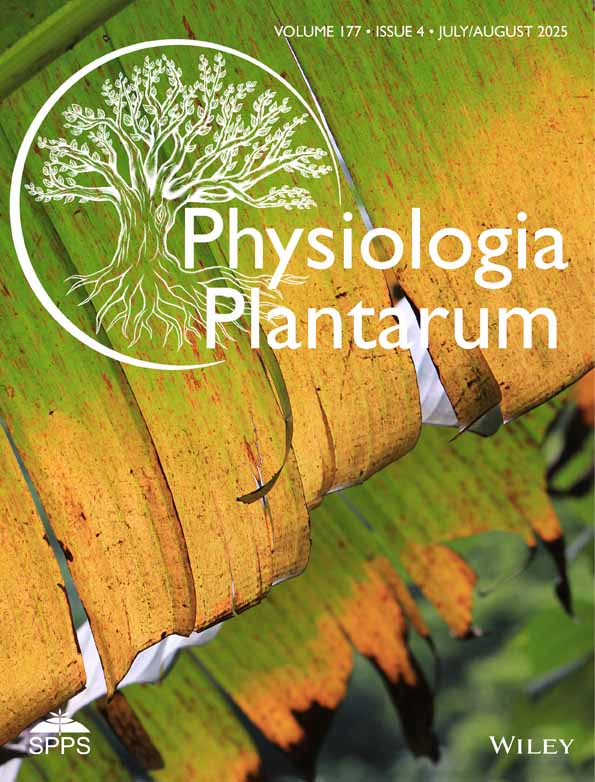Immunolocalization of integrin-like proteins in Arabidopsis and Chara
Abstract
Integrins are a large family of integral plasma membrane proteins that link the extracellular matrix to the cytoskeleton in animal cells. As a first step in determining if integrin-like proteins are involved in gravitropic signal transduction pathways, we have used a polyclonal antibody against the chicken β1 integrin subunit in western blot analyses and immunofluorescence microscopy to gain information on the size and location of these proteins in plants. Several different polypeptides are recognized by the anti-integrin antibody in roots and shoots of Arabidopsis and in the intemodal cells and rhizoids of Chara. These cross-reactive polypeptides are associated with cellular membranes, a feature which is consistent with the known location of integrins in animal systems. In immunofluorescence studies of Arabidopsis roots, a strong signal was obtained from labeling integrin-like proteins in root cap cells, and there was little or no immunolabel in other regions of the root tip. While the antibody stained throughout Chara rhizoids, the highest density of immunolabel was at the tip. Thus, in both Arabidopsis roots and Chara rhizoids, the sites of gravity perception/transduction appear to be enriched in integrin-like molecules.
Abbreviations
-
- DIC
-
- differntial-interference-contrast
-
- FITC
-
- fluroscein isothiocyanate
-
- PMSF
-
- phenylmethylsulfonyl fluoride




